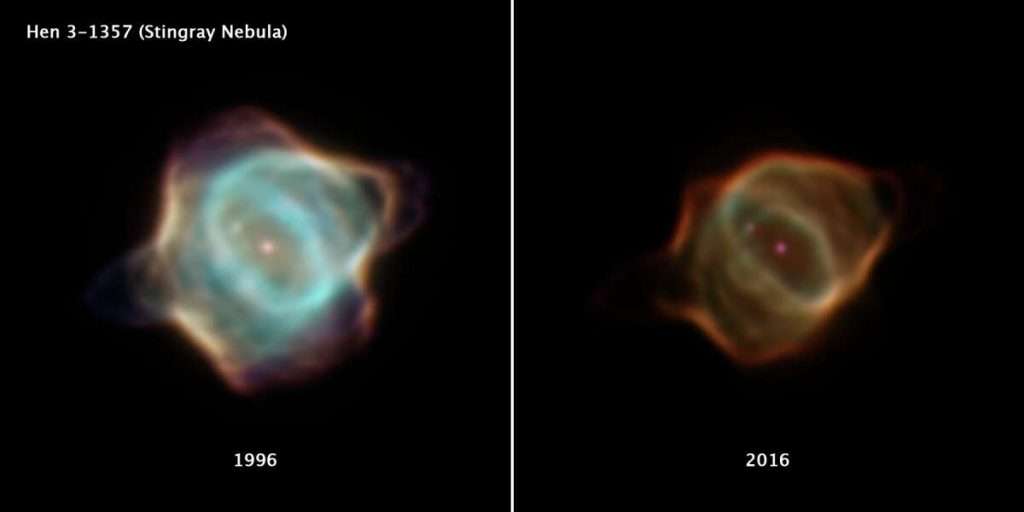
Many processes in the universe take place on gigantic time scales, taking billions of years, so to study such a process, astronomers have to prove on the example of several different space objects that these objects are a reflection of the same general process at different stages. It is very rare to capture the evolution of an astronomical object in real time. But such an event was witnessed by researchers who analyzed the results of the observation of the Scat planetary nebula using the NASA/ESA Hubble Space Telescope.
The planetary nebula is the remains of a star that has dropped its outer shells at the last stages of its life cycle. Scat Nebula was named one of the youngest known planetary nebulae when the last stages of the evolution of a dying star were captured with the help of Hubble in 1998. Now, 20 years after the first observations, the Scat nebula has attracted the attention of astronomers for another reason.
Images taken in 2016 (see photo) show a significant blurring of the nebula over the past two decades. In addition, the gas shells surrounding the central star have changed, and are now substantially less clear and emanating from the background of the surrounding space as before. Such visual changes of the nebula have never before been noted in the history of space observations. If we talk about numbers, then, for example, the intensity of oxygen lines fell by about 1000 times during this twenty-year period, said the authors of a new study led by Bruce Balick from the University of Washington in Seattle, USA.
Usually, during evolution, the planetary nebula becomes larger, and not smaller, as in the case of the Scat nebula, Balik explains. The abnormal and rapid evolution of the Scat nebula may be related to the unusual nature of the central star SAO 244567, which was studied in 2016 by another group led by Nicole Reindl of the University of Potsdam in Germany. In their study, Reindle and her colleagues show that the temperature of the star soared from about 22,000 degrees Celsius to 60,000 degrees Celsius between 1971 and 2002, after which the star began to cool. According to the Reindle hypothesis, this temperature burst is associated with a thermonuclear flash corresponding to the burning of helium on a star. This helium flash caused the rapid evolution of the Scat nebula and allowed real-time observation of amazing shifts in the structure of this nebula, Reindle added.





